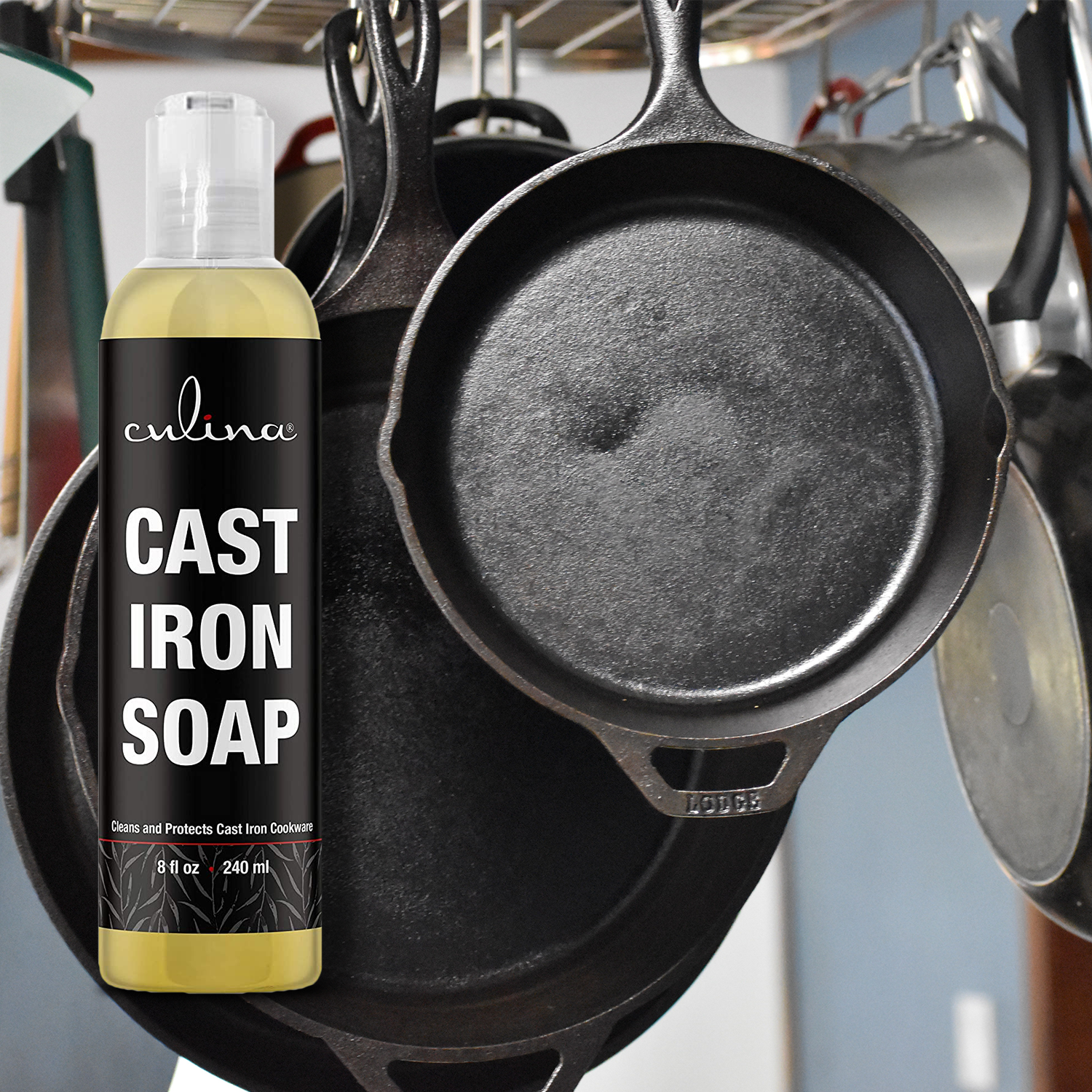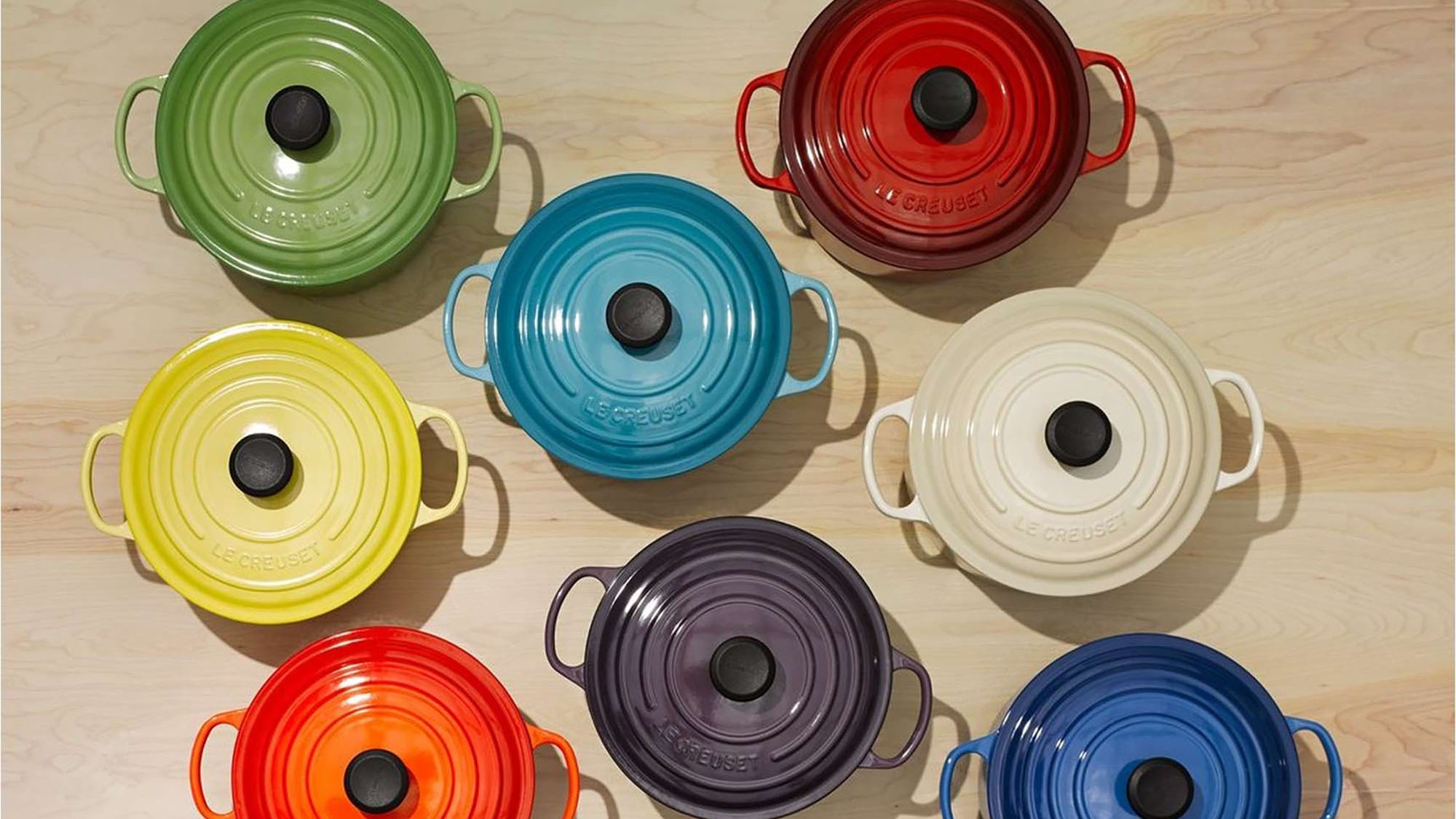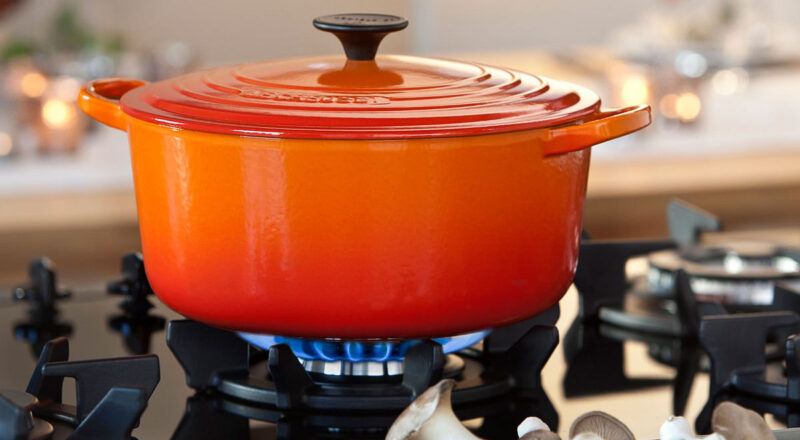Baking sourdough bread is a delightful and rewarding experience. Whether you are a seasoned pro or a beginner, learning how to bake sourdough bread in a Dutch oven can be a game changer in your baking journey. The Dutch oven creates the perfect environment for the dough to rise, forming a beautifully crusty exterior while maintaining a soft, airy interior. In this article, we will guide you through the process of baking sourdough bread using this terrific kitchen tool. Let’s dive into the world of delicious, homemade sourdough bread!

Why Use a Dutch Oven?
A Dutch oven is a heavy-duty pot with a tight-fitting lid, often made of cast iron. Its primary advantage is its ability to evenly distribute heat and retain moisture. This makes it perfect for baking bread, as it creates the ideal conditions for the dough to expand and develop a crispy crust. Find more about cooking with cast iron here.

Ingredients for Sourdough Bread
Basic Ingredients
- 500g bread flour
- 350g water
- 100g sourdough starter
- 10g salt
Optional Ingredients
- Seeds (sesame, sunflower, etc.)
- Herbs (rosemary, thyme, etc.)
- Whole grains

Step-by-Step Guide on How to Bake Sourdough Bread in a Dutch Oven
1. Preparing the Sourdough Starter
Your sourdough starter needs to be active and bubbly before you use it. Feed it 4-6 hours before you plan to start baking.
2. Mixing the Dough
Combine 500g of bread flour, 350g of water, 100g of sourdough starter, and 10g of salt in a large bowl. Mix until all the ingredients are well incorporated.
3. Autolyse Period
Let the dough rest for 30 minutes. This allows the flour to fully absorb the water and the gluten to start developing.
4. Stretch and Fold
Perform a series of stretches and folds every 30 minutes for the next 2 hours. This helps to develop the dough’s strength and elasticity.
5. Bulk Fermentation
Allow the dough to ferment at room temperature for 4-6 hours, or until it has doubled in size.
6. Shaping the Dough
Gently shape the dough into a round loaf. Be careful not to deflate it too much.
7. Second Fermentation
Place the shaped dough into a floured proofing basket or bowl. Let it rise for another 2-3 hours or refrigerate it overnight.
8. Preheating the Dutch Oven
While the dough is in its second fermentation, preheat your oven to 475F (245C) with the Dutch oven inside. This ensures that it’s hot enough to create that crispy crust.
9. Baking the Bread
Carefully transfer the dough to the preheated Dutch oven. Cover it with the lid and bake for 20 minutes. Remove the lid and bake for an additional 20-25 minutes until the crust is golden brown.
10. Cooling
Remove the bread from the oven and let it cool on a wire rack for at least an hour before slicing into it. This helps in setting the crumb structure.

Maintaining Your Dutch Oven
Keeping your Dutch oven in good shape ensures successful bakes in the future. Make sure to clean it thoroughly and season it as required. Learn how to clean a Dutch oven here.
Tips and Tricks for Perfect Sourdough Bread
1. Temperature Control
Keep an eye on your kitchen’s temperature. Sourdough fermentation is sensitive to temperature changes, so maintain a consistent environment.
2. Hydration Level
Adjust the water content based on your flour type and environment to get the right dough consistency.
3. Scoring Patterns
Experiment with different scoring patterns for a beautiful appearance. Use a sharp knife or a lame to create neat slashes.
Common Mistakes to Avoid
1. Overproofing the Dough
If the dough is overproofed, it will collapse during baking. Keep an eye on the fermentation times.
2. Using Inactive Starter
An inactive starter won’t give your bread the rise it needs. Ensure your starter is bubbly and active before baking.
3. Improper Shaping
If the dough isn’t shaped properly, it won’t have the right structure. Be gentle but firm during shaping.
Frequently Asked Questions
1. Can I use whole wheat flour?
Yes, you can substitute some of the bread flour with whole wheat flour. Keep in mind that whole wheat flour absorbs more water.
2. How do I store sourdough bread?
Store your bread in a paper bag or a bread box to keep the crust crispy. Avoid using plastic bags as they can make the crust soft.
3. Can I freeze sourdough bread?
Yes, you can freeze sourdough bread. Slice it beforehand and store the slices in an airtight container or a zip-lock bag.
As an Amazon Associate, I earn from qualifying purchases.

